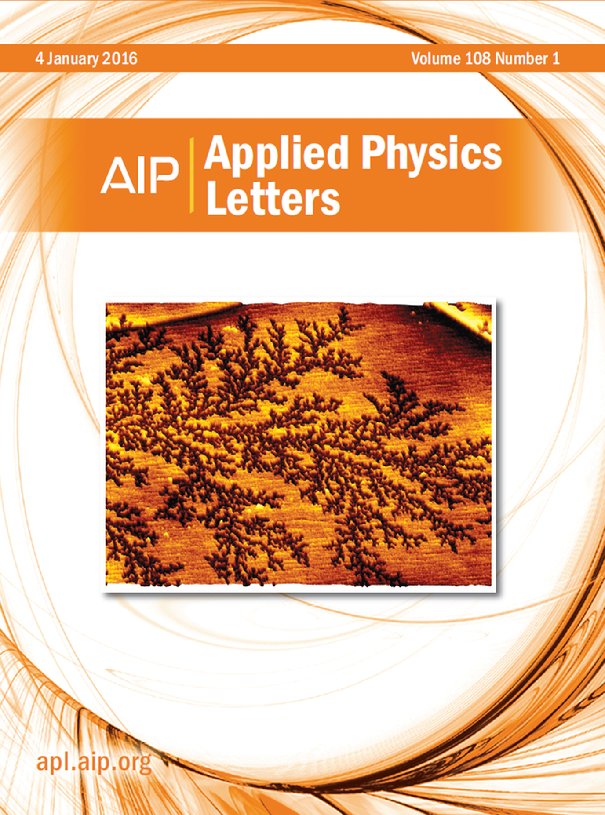An image taken from our article “Coarsening dynamics of ice crystals intercalated between graphene and supporting mica” has appeared on the cover of the first issue of 2016 of the journal Applied Physics Letters:

In the article we study the structure of ice fractals confined between graphene and mica. The growth of the ice crystals is initiated by the heat extracted from the system by evaporation, into the 3D ambient, of water molecules intercalated between mica and graphene under low humidity conditions. We demonstrated the fractal shape dependence on the graphene cover and the evaporation rate of the water molecules from the double bilayer. We found that the thickness of the fractals’ fingers scale as the square root of the ratio of the bending energy of graphene plus the surface energy of the intercalated ice and the product of the velocity of the fractal front and a term related to hindrance of the water ad-molecules. Ice fractals formed under a thick graphene cover and upon a low evaporation rate are thick with few side branches, whereas fractals grown upon high growth rate under single-layer graphene are thin and very ramified. We attribute the coarsening of fractals to the extra degree of freedom of the surrounding water molecules, enabled by the non-complete adaptation of the ice crystal’s morphology by the graphene cover. Our findings shed light on the intriguing shapes and structures of ice crystals intercalated between graphene and mica.
The work is a result of a close collaboration between the Physics of Interfaces and Nanomaterials (PIN) group and the Physics of Fluids (POF) group of the University of Twente.





